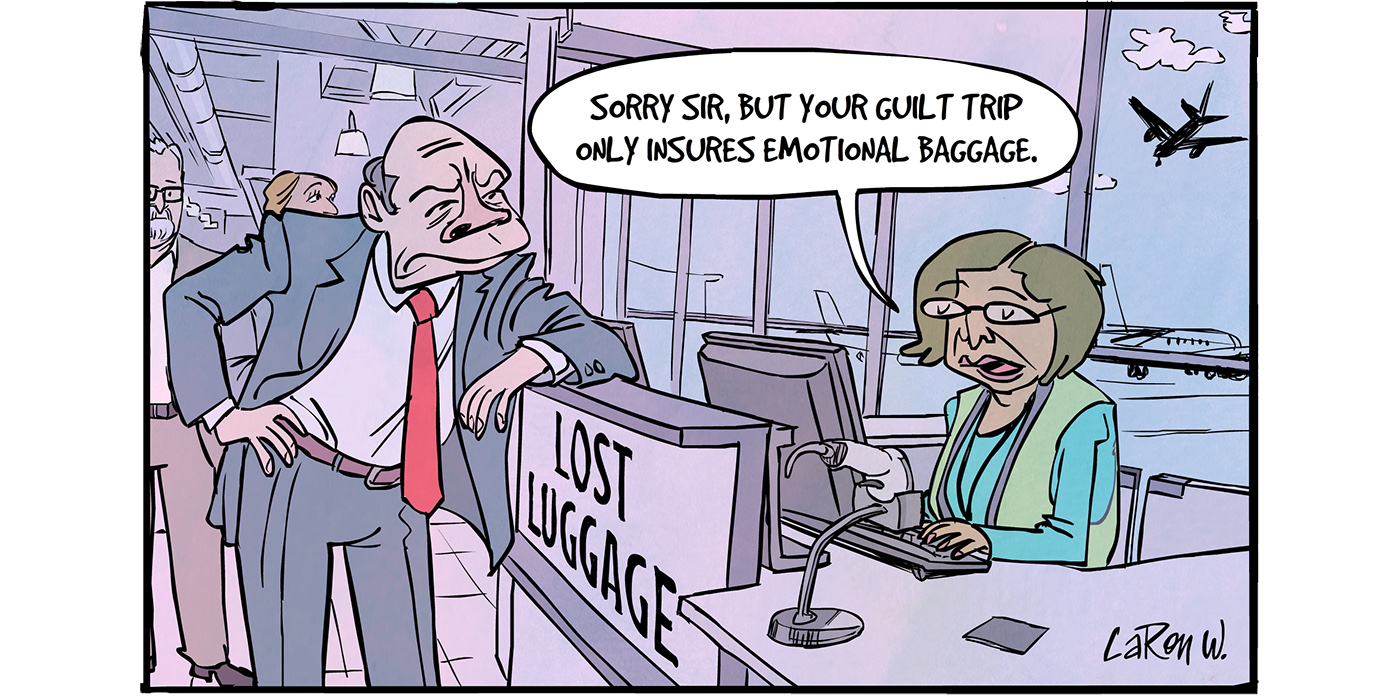The quality of sharing in meetings has been on my mind, off and on, for several months. I’ve been finding it increasingly frustrating when the sharing veers off from the topic introduced by the lead speaker.
I think it’s imperative for our common recovery to have discussions which are faithful to their theme—where the leader presents one or more central and considered thoughts, and successive speakers contribute on the same topic, amplifying the theme by sharing their individual perspectives and experiences. Discussions that follow this pattern offer growth through common sharing—drawing the participants together and giving us community in spirit.
I’m not saying that members shouldn’t speak about their struggles, but I’ve found that “getting current” has readily become an excuse for dumping, sometimes at length, and often with the consequence that sharing our “strength and hope” gets forgotten … along with the lead topic. When this happens, discussion drifts through seemingly disconnected experiences, frustrations, and anecdotes. Such speakers may digress at length, precluding more focused sharing and causing resentful undercurrents. When brought, even tactfully, to a stop, these “sharers” can harbor hurt feelings, occasionally leaving before the end of a meeting.
How does this come about and what steps can we take to deflect potential occurrences? In my own early SA days, I was preoccupied with my experiences (including arrest and prospective trial)—and not in a place where I considered how my past might benefit others. Some meetings I attended didn’t have a central theme. I wasn’t concerned with this; instead, I found “comfort” in the absence of planned leads and leaders. In ways tied to being an addict, I felt such “flexibilities” to be “enriching” because they didn’t obligate commitment.
Basic steps to improve sharing at meetings involve picking leaders in advance and setting minimum sobriety requirements for sharing, leading, and for sharing in the first part of meetings. The SA meeting guide is clear on means (raising one’s hand) for bringing explicit or sexually abusive sharing to a halt.
Some groups set time limits on sharing and use these as a means for ensuring that no one is precluded from sharing by one or more participants speaking at length. Time limits curb length, but don’t in and of themselves inhibit directionless speaking or enhance the quality of sharing. The use of time limits raises a question: is our paramount concern that everyone have an opportunity to share at every meeting? Taken alone, time limits may actually emphasize something different from what we implicitly and explicitly hope to gain from our program. For instance, they may signal that sticking to one theme is less important, or that the group has found it easier to focus on quantitative measures than to emphasize quality in sharing. The use of time limits without actively seeking to improve the quality of our sharing may be a signal that we are placing an unhealthy reliance on easy solutions.
There are additional steps for those willing to take them. Through group consciences, a group can: a) adopt an appropriate “sense of the group” concerning continuity between lead and successive sharing … and reinforce this “sense” with specific language in the group’s meeting guide to emphasize the “desirability of sharing not only our experience, but our strength and hope”; b) agree on a need to limit dumping or extensive “getting current” monologues … and develop a group consensus of what this means so that members may feel free to raise a hand at perceived “excesses”; and c) strongly encourage all participants to obtain a sponsor so that they have an opportunity to discuss discouraging experiences at length without detracting from a group meeting.
How might our sharing best help us recover from lust? The solution starts with holding a group meeting to discuss what constitutes inappropriate sharing, to identify problems in advance, and to reach a consensus on how to deal with them. Later, during meetings, members will not feel they may be overstepping a boundary by asserting the need for sobriety and recovery in discussion.
What is inappropriate sharing? Statements such as, “I’ll know it when I hear it” don’t delineate precepts, set tone for the group, or provide guidance for those in need of it. The group might confer on what causes frustration, annoyance, or boredom among participants and on distinctions between detraction and recovery. This may entail judgments about repetition, rambling, recounting experiences at excessive length, a speaker’s lack of awareness that he or she is trying to alleviate stress through emotional delivery, and recounting incidents which are focused on the actions of others, rather than one’s own.
There are no absolute answers—they change as a group matures. We can also approach this topic from a positive perspective. What characteristics define constructive sharing? Groups can actively encourage all participants to speak of their strength and hope, as well as their experience. We can talk about changing our behavior and changing our minds (and the contents of our minds), and about the attitudes that we want to embrace in our daily lives. When we limit our sharing to negative and discouraging experience, we face the danger of filling our mind with negativity and discouragement—restricting our awareness that we have other options. Like a “negative affirmation,” we focus our energy (both as an individual speaker and as a group) away from recovery.
How can we “get current” constructively? Describing a painful situation may be beneficial; we can describe relevant circumstances and we can link discussion to ourselves to avoid talking in abstruse generalities. Getting current constructively differs from dumping in both tone and focus. Rather than focusing on problems as outside of ourselves, regardless of how we would like to perceive their origin, we can bring solutions into our discussion. How am I going to change? What steps am I prepared to take? Instead of emphasizing resignation (this is awful…unavoidable…unfair), we can affirm our intention to find alternatives. Even at the worst of times, we can identify one or more small steps to take and obstacles we face in taking those steps. At heart, we are taking responsibility in concert with our Higher Power.
What do we want to come forward from our meetings? What we share as individuals is, collectively, our common judgment about how we want to help ourselves grow in recovery. Perhaps serenity is an answer. If we are at peace with ourselves, we can share peace with others. How many of us knew serenity coming into this program? And how much are we opposing serenity still? Does coming to meetings proclaim that we want recovery from lust? What can a meeting offer? How can we be sincere in saying we want recovery and yet not take whatever steps we can to promote quality sharing in our meetings?
These are thoughts I never entertained when I came into SA. So, I’m asking: Won’t we be making a contribution to our collective recovery by discussing how we may improve the quality of our sharing?
J.O.






